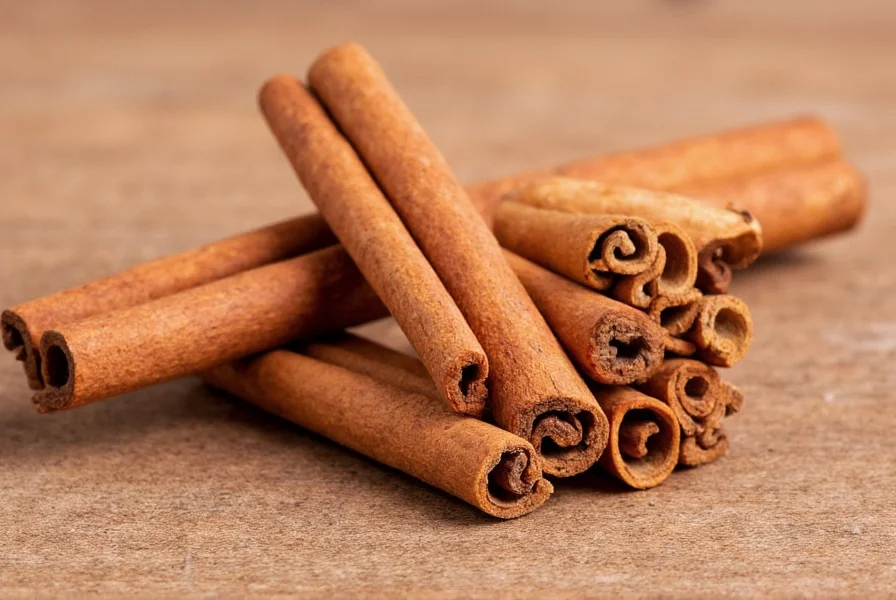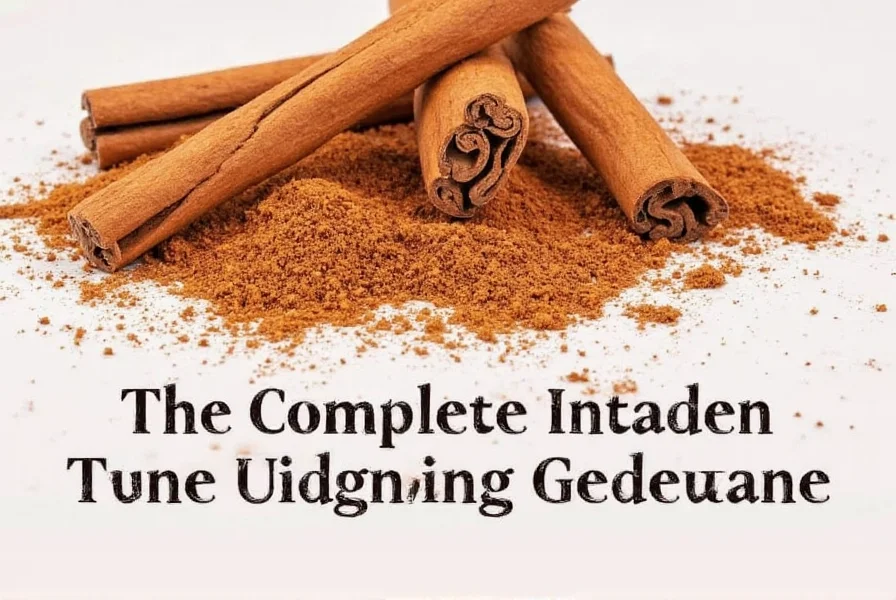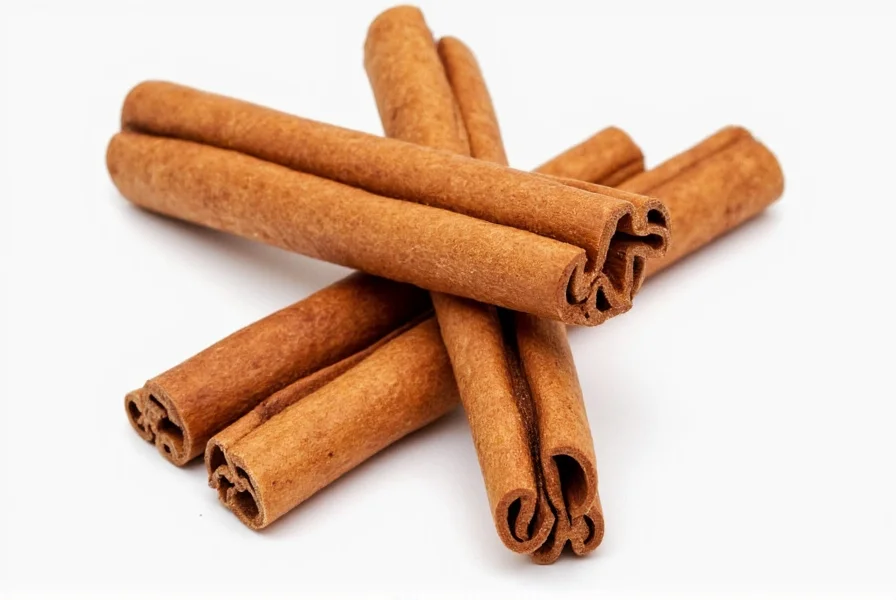Cinnamon’s warm, sweet flavor and enticing aroma have made it one of the world’s most beloved spices for millennia. This versatile ingredient enhances both sweet and savory dishes across global cuisines while offering potential health benefits supported by modern research. Understanding what cinnamon is goes beyond just its culinary applications—it connects us to ancient trade routes, botanical science, and contemporary nutritional studies.
Types of Cinnamon: Ceylon vs. Cassia
Not all cinnamon is created equal. The two main varieties differ significantly in appearance, flavor profile, and chemical composition:
| Characteristic | Ceylon Cinnamon | Cassia Cinnamon |
|---|---|---|
| Also known as | True cinnamon, Cinnamomum verum | Chinese cinnamon, Cinnamomum cassia |
| Appearance | Multiple thin, delicate layers forming a tight scroll | Thick, hard single-layer quill |
| Taste | Milder, sweeter, more complex | Stronger, hotter, more pungent |
| Coumarin content | Very low (0.004%)—safe for regular consumption | High (up to 6.97%)—potential health concerns with regular large doses |
| Price | More expensive | More affordable |
| Availability | Specialty stores, health food markets | Most grocery stores |

Historical Journey of Cinnamon
Cinnamon's history spans over 4,000 years, with references appearing in ancient Chinese botanical texts from 2800 BCE. Egyptian texts mention its use for embalming and medicine, while Hebrew scriptures describe it as an ingredient in sacred anointing oil. For centuries, Arab traders controlled the cinnamon trade, spinning elaborate tales about its origins to protect their monopoly—claiming it was guarded by giant birds or harvested from dangerous swamps.
The spice became so valuable that European powers launched expeditions to find its source. Portuguese explorers reached Sri Lanka (then Ceylon) in the early 16th century, establishing control over the cinnamon trade. The Dutch later took over in the 17th century, implementing strict cultivation controls. British colonization followed in the 18th century, eventually leading to widespread cultivation beyond Sri Lanka.
How Cinnamon Is Produced
The process of harvesting cinnamon involves careful timing and skilled craftsmanship. During the rainy season when the bark is most pliable, workers cut branches from mature cinnamon trees. They then make precise incisions in the bark and carefully peel off the outer layer. The valuable inner bark is separated and left to dry for several hours.
As the inner bark dries, it naturally curls into the familiar quill shape. Workers then pack these quills into layers, where they continue drying for several more days. After drying, the quills are cut to uniform lengths and either sold as sticks or ground into powder. This traditional method has changed little over centuries, though modern processing includes quality control measures to ensure purity and prevent contamination.
Nutritional Profile and Bioactive Compounds
What makes cinnamon more than just a flavoring agent are its bioactive compounds. The most notable is cinnamaldehyde, which gives cinnamon its distinctive aroma and flavor while providing many of its health benefits. Cinnamon also contains significant amounts of:
- Antioxidants (polyphenols) - higher concentration than many fruits and nuts
- Manganese - essential for bone health and metabolism
- Fiber - supports digestive health
- Calcium - important for bone and teeth health
- Iron - crucial for blood health
Research shows cinnamon contains over 80 different phenolic compounds that contribute to its potential health-promoting properties. These compounds work synergistically, creating effects that may be more beneficial than isolated components.
Health Benefits Supported by Research
While cinnamon has been used in traditional medicine systems worldwide, modern science is beginning to validate many of these applications. Current research suggests potential benefits including:
Blood Sugar Regulation
Multiple studies indicate cinnamon may help improve insulin sensitivity and lower blood sugar levels. A meta-analysis published in the Journal of the Academy of Nutrition and Dietetics found that cinnamon supplementation significantly reduced fasting blood glucose levels. The mechanism appears to involve mimicking insulin and enhancing glucose uptake by cells.
Anti-Inflammatory Properties
Cinnamon's compounds demonstrate significant anti-inflammatory effects in laboratory studies. Chronic inflammation contributes to many diseases, and cinnamon's ability to inhibit inflammatory pathways may offer protective benefits. Research in the journal Food & Function demonstrated cinnamon's potential to reduce markers of inflammation.
Heart Health Support
Studies suggest cinnamon may help improve several markers of heart health, including reducing triglycerides, total cholesterol, and LDL (bad) cholesterol while maintaining HDL (good) cholesterol levels. These effects, combined with potential blood pressure benefits, contribute to cardiovascular protection.
Antimicrobial Effects
Cinnamaldehyde exhibits natural antimicrobial properties against bacteria, fungi, and even some viruses. This explains cinnamon's historical use in food preservation and its potential applications in natural cleaning products.

Culinary Applications Around the World
Cinnamon's versatility makes it a staple in kitchens across the globe. Understanding what cinnamon is used for culinarily reveals fascinating cultural differences:
- Middle Eastern cuisine: Features prominently in savory dishes like lamb stews, rice pilafs, and spice blends such as baharat
- Mexican cooking: Essential in traditional hot chocolate and mole sauces
- Indian cuisine: Key component in garam masala and many curry blends
- European baking: Central to pastries like snickerdoodles, cinnamon rolls, and apple pie
- Chinese medicine: Used in herbal formulations for its warming properties
Professional chefs recommend adding ground cinnamon early in the cooking process for savory dishes to allow flavors to meld, while adding it later in baking to preserve its delicate aroma. For the most intense flavor, toasting whole cinnamon sticks before grinding releases additional aromatic compounds.
Safety Considerations and Consumption Guidelines
While cinnamon is generally safe when consumed in culinary amounts, certain considerations are important:
- Coumarin content: Cassia cinnamon contains high levels of coumarin, which in large amounts may cause liver damage in sensitive individuals. The European Food Safety Authority recommends a maximum daily intake of 0.1 mg of coumarin per kilogram of body weight.
- Allergic reactions: Though rare, some individuals may experience oral allergy syndrome or skin irritation.
- Medication interactions: Cinnamon may interact with blood thinners, diabetes medications, and liver-affecting drugs.
- Pregnancy: Moderate culinary use is generally considered safe, but therapeutic doses should be avoided.
For regular consumption, especially for those with liver conditions or taking medications, Ceylon cinnamon is the safer choice due to its minimal coumarin content. Most experts suggest limiting Cassia cinnamon to about 1 teaspoon (2-4 grams) per day for adults.
Choosing and Storing Cinnamon
To maximize flavor and shelf life when purchasing cinnamon:
- Buy whole sticks when possible: They retain flavor longer than pre-ground powder
- Check the label: Look for “Cinnamomum verum” for Ceylon or “Cinnamomum cassia” for Cassia
- Smell test: Fresh cinnamon should have a strong, sweet aroma
- Storage: Keep in an airtight container away from light and heat; whole sticks last up to 3-4 years while ground cinnamon remains potent for 6-12 months
- Grinding: Use a dedicated spice grinder or mortar and pestle for best results
Conclusion
What is cinnamon if not one of nature’s most remarkable gifts to humanity? This ancient spice bridges culinary traditions, historical trade routes, and modern scientific research. Whether you’re sprinkling it on your morning oatmeal, incorporating it into a savory tagine, or exploring its potential health benefits, understanding the different types and proper usage ensures you get the most from this versatile spice. By choosing the right variety for your needs and using it appropriately, cinnamon can enhance both your cooking and potentially your wellbeing.
Frequently Asked Questions
What is the difference between Ceylon and Cassia cinnamon?
Ceylon cinnamon (Cinnamomum verum) has multiple thin layers forming a delicate scroll, tastes milder and sweeter, contains very low coumarin levels, and is more expensive. Cassia cinnamon (Cinnamomum cassia) has a thick, hard single-layer quill, stronger flavor, high coumarin content, and is more affordable. Most supermarket cinnamon is Cassia, while Ceylon is often labeled as “true cinnamon” and found in specialty stores.
Is cinnamon good for blood sugar control?
Research suggests cinnamon may help improve insulin sensitivity and lower fasting blood glucose levels. Multiple studies and a meta-analysis have shown modest benefits for blood sugar regulation, particularly in people with type 2 diabetes. The active compounds appear to mimic insulin and enhance glucose uptake by cells. However, cinnamon should complement rather than replace diabetes medications, and those with diabetes should consult their healthcare provider before using cinnamon therapeutically.
How much cinnamon can I safely consume daily?
The safe daily amount depends on the type of cinnamon. For Cassia cinnamon (higher in coumarin), most experts recommend no more than 1 teaspoon (2-4 grams) per day for adults. Ceylon cinnamon contains minimal coumarin and can be consumed in larger amounts—up to 1-2 teaspoons daily is generally considered safe. Those with liver conditions, taking medications, or pregnant should consult a healthcare provider before regular consumption.
Can I substitute Ceylon cinnamon for Cassia in recipes?
Yes, you can substitute Ceylon cinnamon for Cassia in most recipes, but you may need to adjust the quantity. Ceylon has a milder, more delicate flavor, so you might use 25-50% more to achieve a similar intensity. In baking, this substitution usually works well, but in traditional recipes specifically developed for Cassia's stronger flavor (like many American cinnamon roll recipes), the result may be less intense. For savory dishes where cinnamon plays a supporting role, the substitution typically works without adjustment.











 浙公网安备
33010002000092号
浙公网安备
33010002000092号 浙B2-20120091-4
浙B2-20120091-4